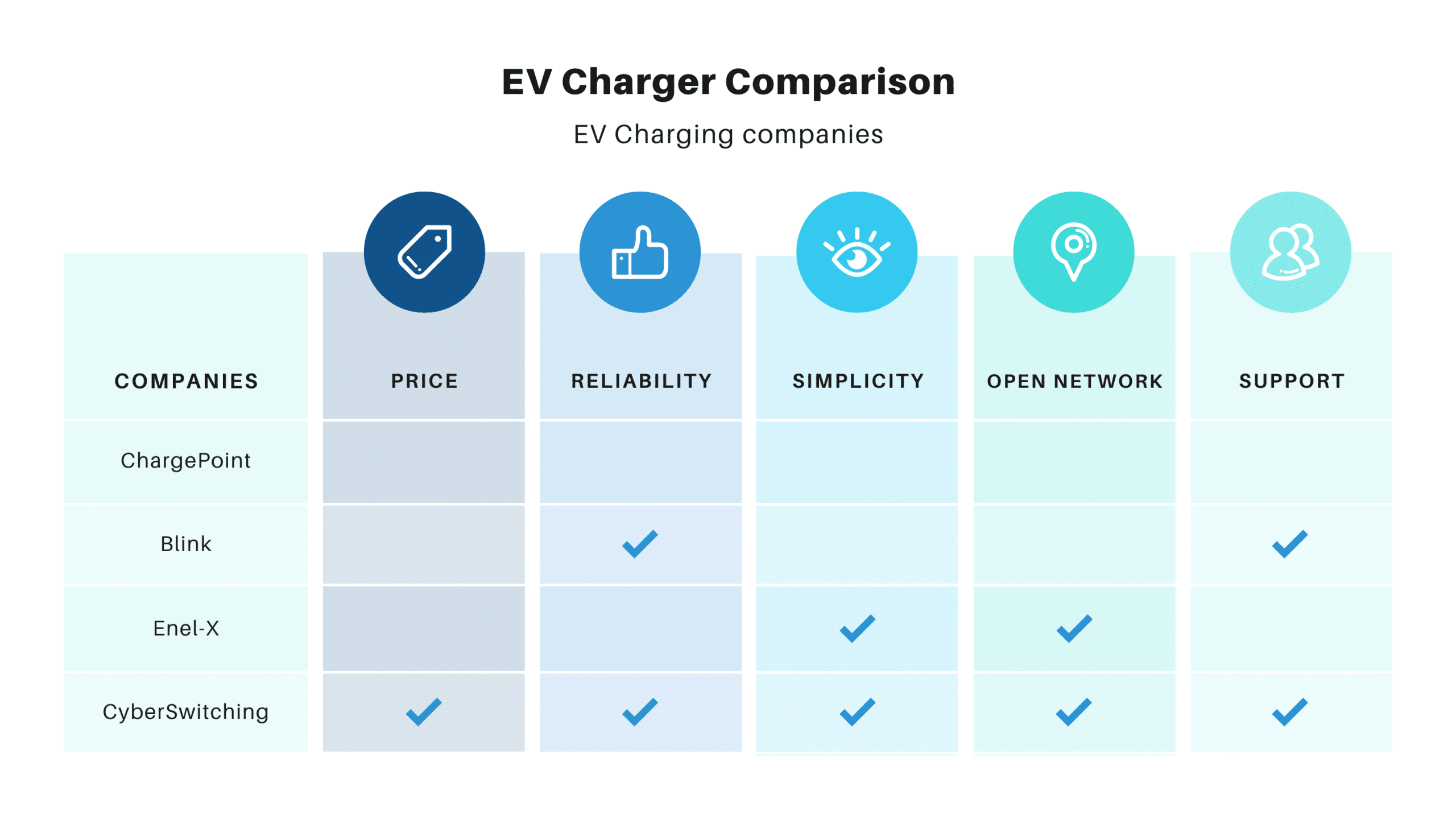Home / Commercial EV Charging Station / EV Charging Stations for Local Governments
EV Charging station companies comparison

$2,890.00 Original price was: $2,890.00.$2,790.00Current price is: $2,790.00.
$3,950.00 Original price was: $3,950.00.$3,450.00Current price is: $3,450.00.
The transition towards a sustainable transportation sector is gaining momentum, with a clear shift towards an electrified and non-fossil fuel-based industry. The United States government has taken a proactive stance by issuing an executive order titled “Planning for Federal Sustainability in the Next Decade.” This order highlights the importance of electric vehicle (EV) expansion in achieving the nation’s energy efficiency and sustainability goals.
In accordance with the executive order, by 2025, 50% of all new federal executive agency passenger vehicles are mandated to be zero-emission vehicles (i.e., electric vehicles). This ambitious target necessitates careful planning for the necessary charging infrastructure to support the growth of EVs. Installing EV charging stations for federal and state agencies is not only encouraged but also considered a critical component of the government’s sustainability strategy.
By embracing EV charging technology, government agencies and municipalities can play a pivotal role in promoting sustainable transportation and contributing to a cleaner, healthier future. The Cyber Switching CSE1 stands as a testament to this commitment, empowering government entities to lead the charge towards a greener tomorrow.
By 2025, half of new government vehicles would be electric. While these targets are ambitious, they will not stop there as the trend is to completely move the transportation sector to a fully electric-based car industry. This will mean a large influx of new EV fleets that will need multiple charge point sources and none of them will be better than an EV charger right there at the office.
Having a smart Level 2 EV charging station for local governments is an valuable asset that will allow employees to charge their EVs up to 10 times faster than using a Level 1 type charger at home. Moreover, government EV fleets can be monitored for their charging status and charging times can be pre-programmed to make use of the best electricity tariffs available from the utility.
One of the perks of installing a smart EV charging station like the CSE1 at your local government building is that the charger can be configured to operate only with authorized personnel from the agency. This will give local employees a faster and safer way to charge their EVs while at work, maximizing the productivity of the agency or municipality.
City of
Seattle

City of
San Francisco

City of
Palo Alto

City of
San Ramon

City of
Eugene

Selecting EV charging stations for local governments involves considering various factors to ensure the effective deployment and management of electric vehicle infrastructure. Here are key considerations for local governments:
By carefully considering these factors, local governments can make informed decisions when selecting EV charging stations, contributing to the development of a reliable and user-friendly electric vehicle charging infrastructure within their communities.
The Open Charge Point Protocol (OCPP) is basically an open-source communication protocol intended to be common software language among networked EV charging stations. An EV charger that is compatible with OCPP will be able to work with any charge management software that complies with OCPP standards. This gives the user the ability to select the desired management software.
Cyber Switching CSE1 is OCPP compliant and is already pre-commissioned with AmpUp software for ease of use.
There is not a maximum number of CSE1 charging stations that can be installed in any specific building. However, the limit will be dictated by the existing electrical infrastructure and the budge available for the project.
A good way to feed as many EV chargers as possible while maximizing the use of the existing electrical infrastructure is by installing an EVMC. This allows the installer to add up to 4 EV charging stations to the same circuit branch without exceeding amperage limits for the circuit.
There are multiple incentives and grants that are offered by Federal and local State programs which can be access through the government website. Public agencies are also eligible in some states for incentives, which can help you purchase EV chargers for your office.
Yes, both the CSE1 and CSE2 charging station are ETL-listed equipment with a Type 3 enclosure that is rated to work indoors or outdoors. This means they’re rated to prevent dirt and dust from entering inside the equipment and is also protected against rain, snow, or sleet.
Both CSE1 and CSE2 EV charging stations could be mounted on the wall, on a standard pedestal as well as on the pedestals with cable management
CNET

TechCrunch

Nasdaq

TechTimes

IBT

Yahoo

Torque

Hackernoon

Email: info@cyberswitching.com
Phone: 1.408.436.9830
Having trouble? Find the answer to your query here. Don’t hesitate to contact us!
Follow our latest news and thoughts which focuses exclusively on Power Management and EV Charging
Your Power Management Partner for Over 25 Years Future Generations Depend on Our Decisions Today ™
2024 © All rights reserved by CyberSwitching